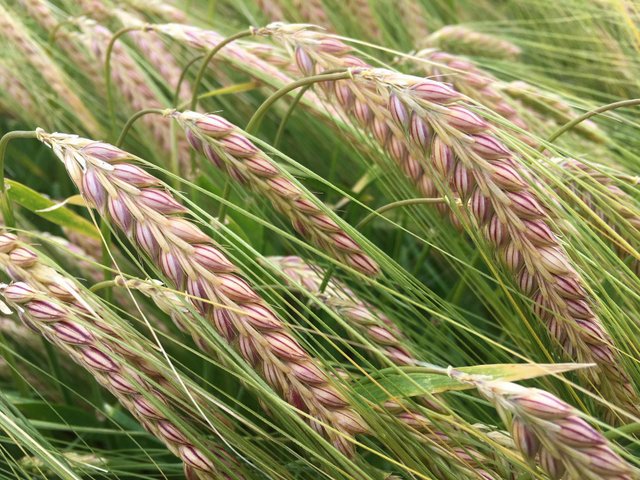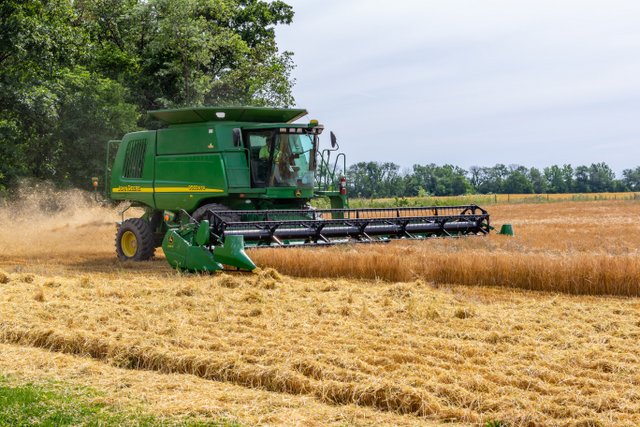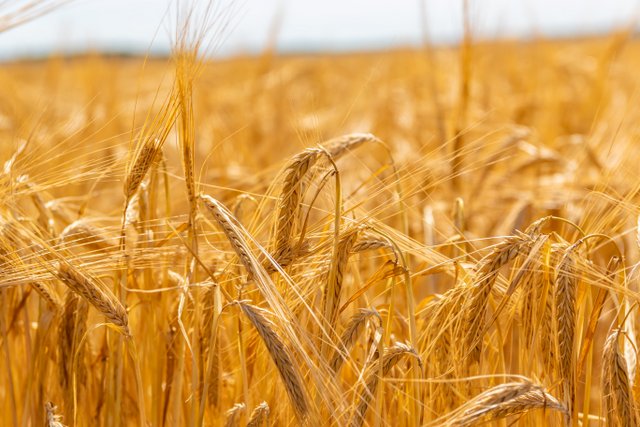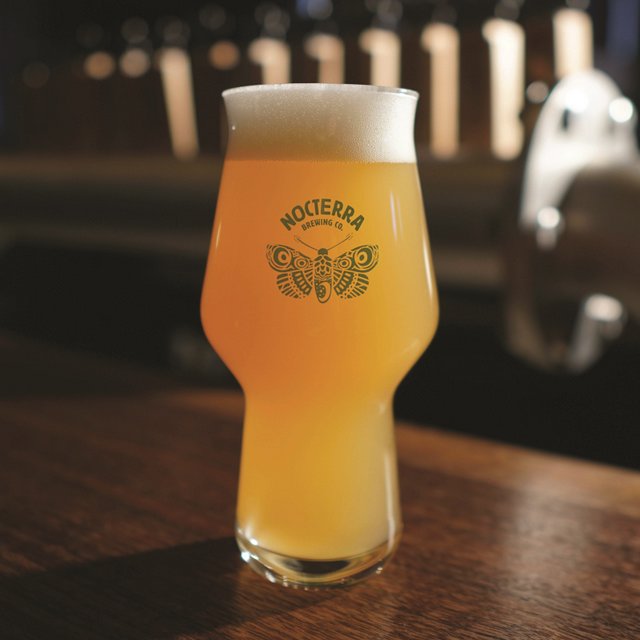
The craft part of craft beer embodies many characteristics. The Brewers Association has a specific definition, defining a craft brewery as “small, independent and traditional” with descriptions for each word. That term “craft” also exudes other non-defined feelings of artisanship, specialized ingredients and local flair to consumers (among many other things). The word craft says this product, this beer, has a story to tell, and Ohio’s Origin Malt wants to help breweries create and tell those stories.
The Columbus, Ohio-based maltster is focused on bringing back Midwest-grown barley, which it feels aligns with the local-focused narratives of many a brewery. Origin Malt was formed in 2015 to “redefine what is possible in a globally connected, locally driven supply chain.”
“There are three key themes that we view as important to our company,” explained Victor Thorne, Origin Malt cofounder. “One is seed to sip. The fact that we partner with farmers and brewers, and we’re really a supply chain company — growing, manufacturing and distribution. We are authentically looking at identifying the right varieties and working through the entire process of how we develop the marketplace from the genetics of the seed to the finished malt and how that impacts flavor. Because of our location and our Midwest focus, one of our taglines is malt within shouting distance. Just being able to truly demonstrate to the brewers and distillers that we’re close by. We’re part of the ecosystem in our region, and we’re collaborating.
“Then the last promise is honest to goodness. We really want to be authentic and transparent and share our innovation and share our research and be very open with our partners. We don’t want to view farmers as our vendors and brewers as our customers. We’re partners with them.”
Ohio malt used to be a big thing

Today, most of America’s barley is grown in the Northwest. The top three states are Idaho, Montana and North Dakota — with Minnesota, Utah, Colorado, Wyoming, Washington, Oregon and California adding to barley and malting’s main growing regions. Prior to Prohibition in 1920, barley actually accounted for nearly 350,000 acres of Ohio’s crops. In 2017, that number dwindled to fewer than 500 acres of barley grown for malting purposes. Origin Malt wants to bring back Ohio’s barley heyday and give Midwest breweries the ability to boast their own special, locally-sourced malt. Origin contracts directly with family farms across four different Midwest states, taking a hands-on approach to engage barley growers and beer makers with resources.
Within the next five years, Origin Malt has big plans to plant at least 75,000 acres of malting barley and operate a brand new, state-of-the-art malthouse in central Ohio. Right now, the company is working about 15,000 acres, but those acres are growing an exclusively licensed variety — LCS Puffin, a two-row winter barley — an offspring of Maris Otter from Limagrain Cereal Seeds.
“Puffin definitely has some unique characteristics that are very prevalent in U.K. originating barleys,” said Sara Hagerty, sales and marketing director at Origin Malt. “There’s a little bit of the nuttiness or almost a toasted almond quality in terms of flavor and nuance to the variety. What’s interesting is because we are 100 percent Puffin, in all of our different types of products — we have C-15, C-40, C-90, a brewer’s malt, pilsner malt — there is this beautiful undercurrent in terms of flavor and quality that the barley has. Part of that is also due to the quality of our contract malting. We work very closely with our contract malting partner to maintain all of our specifications so that we achieve our outcomes for our flavors and for what our goals are for different products.”
A versatile grain

Origin has malted nine different types of malts over the last two years from Puffin. It’s a versatile grain — whether it’s being used as a Munich, pale, pilsner or low protein brewer’s malt. Puffin is actually a winter barley, and it has proven to be exceedingly successful and hardy in the Midwest’s mixed terroir. Its evaluation can be traced back to Ohio State and Associate Professor’s Dr. Eric Stockinger’s work on cold acclimation and freezing tolerance in plants.
“Puffin was identified in a seed bank by Dr. Stockinger. He got permission from Limagrain Cereal Seeds Co. out of the U.K. and Colorado, who owned the rights to it, to trial it. Now we have the rights to bring Puffin to the market in North America,” said Thorne. “Dr. Stockinger looked at over 50,000 unique varieties of barley. Most winters, when you go to his field in Wooster at the Ohio State extension, it would look disastrous. It’s intentional because it shows when you’re breeding these that some of the varieties don’t survive the winter due to its harness. You take those that do or you find the characteristics of those that do and you continue to enhance your genetics. Puffin has a very strong dormancy and has a short stock so it doesn’t blow over in those spring storms in May and June. It’s got great resilience.”
Also, because it’s a winter barley, Puffin is not as susceptible to the diseases that can often impact spring barley. Spring barley is at high risk of Fusarium Head Blight, which produces a vomitoxin (deoxynivalenol or more commonly known as DON) that spreads to barley from corn. What’s great about Puffin as a contradiction to spring barley, it’s a winter crop so it’s not being grown at the same time as corn. Also, Puffin is less at risk for pre-sprouting, which we just reported has been affecting this year’s spring barley crop in the Northwest.
“People are usually really looking at barley reports for spring barley,” explained Hagerty. “There concerns are, ‘What are the vomitoxin levels? Are we having any pre-sprouting?’ Some of those issues that threaten spring barley, winter barley is less at risk. Pre-sprouting is actually a huge problem for spring barley. What happens is the short crops spring barleys that are being grown in Saskatchewan or across the Plains, they get to a point where they’re in the field, and then these rain storms roll across. Because there isn’t latent dormancy in all spring varieties, they can often end up sprouting in the field. We’re lucky in that Puffin actually has a really sound dormancy. Even if there was ever a threat of pre-sprout, the variety itself as a winter barley has dormancy already in its genetics. That’s pretty outstanding.”
Helping define Midwest brewers

Origin Malt’s products have been used by more than 25 craft breweries and can be found in 50+ beers. A good example is North High Brewing Co.’s Cover Crop, an American blonde ale that was a collab between the Ohio Farm Bureau and North High to commemorate the Ohio Farm Bureau’s 100-year anniversary. Origin’s products are also featured as the foundation of many recipes at Midwest breweries from Columbus’ Nocterra Brewing Co. to MadTree Brewing Co. in Cincinnati.
“We currently use Origin Malt as our base malt in 75 percent of our beers, and we are shifting to using more of their specialty malts as they release them,” said Bryan Duncan, brewer at Nocterra Brewing. “As a newer brewery we are building our house flavors and have been extremely pleased with the product. It is fantastic that we’ve had the opportunity to use a high-quality product that is grown in our backyard. As craft breweries, we have access to the same or similar ingredients and can create similar products based on regionality. Being able to have access to local grown malt helps define a regional flavor specific to the Midwest. We are excited to see the future growth of Origin Malt, and we have been happy working with their professional team.”
In addition to direct sales, Origin Malt’s sustainable, high-quality malt will be available to craft brewers starting this fall via the Country Malt Group, which will be distributed via five different warehouses across North America ready to serve brewers and distillers.

“We’re also currently getting ready to launch a more robust version of our website, which I’m very excited for because you’ll be able to actually place order requests directly online,” said Hagerty. “Right now, we have our new crop material coming in, and that’ll be available to consumers directly through Origin Malt but also through the Country Malt Group.”
Regional Midwest craft brewers and distillers who value quality, innovation and local connection will find Origin Malt’s Puffin selection quite interesting. The company continues to help more and more Midwest breweries tell local stories while showcasing traceability to product offerings — the latter a critical feature of the Origin Malt supply chain philosophy — going from seed to sip.
“I’ve been brewing since 2006 and one of the biggest things that I’ve learned as both brewer and as a supplier — to brewers traceability is so undervalued in terms of malts,” said Hagerty. “We’re really pushing to make sure that our customers know where we’re growing, what we’re growing and what makes this their malt. We are pushing that envelope in terms of delivering high-quality grain that we can confidently, with evidence, say this is 100 percent Puffin.”
“Being able to source within your region and truly shorten your supply chain is what I think to be most inspirational about our project. Then top that with being able to bring barley back to this region and its historic prominence. Those are two big things that got me most interested in joining Origin Malt in the first place.”





Leave a Reply
You must be logged in to post a comment.